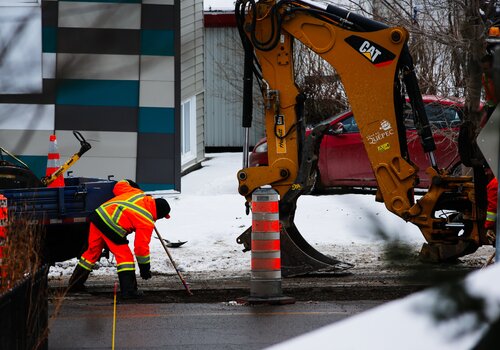Fluids are essential for machine operation, and contractors should familiarize themselves with how to handle them and use them to ensure their equipment functions properly.
Diesel exhaust fluid (DEF) has been on the market since 2014 as one component to creating an engine aftertreatment system that meets U.S. Environmental Protection Agency (EPA) standards for diesel engine, yet there are a lot of people who don’t understand what DEF is, its function and how to store it.
“Many areas in the world have introduced standards to reduce emissions that are produced by diesel engines. One of the key emissions that these standards are designed to reduce is nitrogen oxides (NOx). So, a lot of the latest equipment use DEF and other system components as a cost-effective means of eliminating NOx from diesel engines,” says Andy Miller, service training manager, Caterpillar. “DEF and the onboard systems that use it have been engineered, and most engine manufacturers have made considerable investments in it, so it will probably be around for the foreseeable future.”
Here are the top questions about DEF and the most common ways DEF gets contaminated.
What is diesel exhaust fluid (DEF)?
“DEF is a simple product made of 67.5 percent deionized water and 32.5 percent urea. You could use regular water, but deionized water prevents scaling in the system, among other things,” says Miller.
How does DEF work?
“In diesel exhaust emissions systems, when we spray DEF into the diesel exhaust gases, a chemical reaction takes place. As the newly combined molecules flow through the catalyst filter in the aftertreatment system, it breaks down those components into nitrogen and water, which are harmless gasses so it’s taking harmful gases and converting it into a harmless gas,” says Miller.
What happens when you operate a machine without DEF?
“Within Cat, and among industry peers, the systems are robust against operating a machine without DEF. In the simplest form, there is a level sensor in the tank that monitors the DEF level, and if the level gets too low, the machine will advise the operator that that tank is getting low and needs filling up. If the operator ignores the warnings, the machine will start logging diagnostic codes. And then, if warnings continue to be ignored, the machine will de-rate the engine to basically force the operator to get out of the machine and refill the system. Once it’s refilled, all the fault codes are reset, and life goes back to normal. If an operator goes to the extreme and operates the machine without any DEF, a dealer may need to come out and reset some codes, but the system can’t be damaged by operating the machine without DEF,” says Miller.
How should DEF be stored?
DEF will freeze at 12oF, so storing out of the elements is ideal. However, DEF can freeze and thaw without any negative consequences. It is common for machines to be parked outside and may be exposed to these colder temps. The on-board systems will heat up and thaw the DEF in these conditions so it can be used when needed. There is greater concern on the warm side. “About 95oF is the maximum temperature the DEF should be stored long term. Also, sunlight degrades the urea so keeping DEF in a shaded space that is dry and clean will help prevent contamination,” says Miller.
How long does DEF last?
“If stored under correct conditions, DEF should last up to two years," says Miller.
DEF proper handling and storage
Always keep your DEF free from contamination and stored properly.
“We are approximately seven years into using aftertreatment with DEF systems and we still see issues,” says Miller. “Aftertreatment systems are very robust, but only if the DEF fluid is clean and uncontaminated.”
Here are the top three ways DEF gets contaminated.
- Cross contamination. “By far the biggest issue we see is transfer containers not being cleaned of other fluids,” says Miller. When end-users use a transfer container for both fuel and DEF, there is residual diesel fuel that gets introduced into the DEF system, and it can damage the tank, the pump unit, and the lines that carry the DEF to the aftertreatment system.
- “The second biggest issue we see is dirt contamination. End-users sometimes use a dirty fill container—one with sand or grit in it. This doesn’t impact the ability of the aftertreatment system to turn NOx to ammonia and water, but dirt causes problems for the pump and other components, and it clogs the filters,” says Miller. “Extra care should also be taken when filling the tank. If dirt is not cleaned away from the fill location, it can get into the system when filling and possibly lead to system issues down the road.”
- Wrong fluid. “Thirdly, we see people accidentally putting the wrong fluid into the DEF system, and filling up the DEF tank with diesel fuel is about the worst thing that can be done, so we have tried to engineer that out,” says Miller. DEF fill necks are usually a different color and shape compared to diesel fill necks.
Join more than 50,000 industry peers who receive construction industry news and trends each week. Subscribe to CONEXPO-CON/AGG 365.












